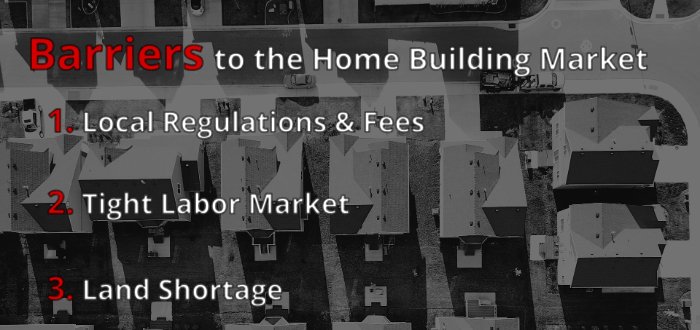The Raub Report – Home Building and Home Owning
April 25, 2018

The housing industry has “sort of recovered,” in the words of Jim Gaines, Chief Economist of The Real Estate Center, continuing that a full decade after the start of the Great Recession, home building still isn’t all the way back. “Theoretically, housing is around 75 to 85 percent of where it should be,” he said. As home building and home owning is such a major part of the U.S. economy, this is a real concern for all of us.
In a Wall Street Journal article by Laura Kusisto, she noted that, “Home construction per household a decade after the bust remains near the lowest level in 60 years of record-keeping, according to the Federal Reserve Bank of Kansas City. Back in the late 1950’s, with the U.S. population at about 200-million and the Baby Boomers were, well, Booming, builders in the U.S. built 2.5 homes per 100 households. In the Bust of 2009, it dipped to only 0.4 homes per 100 households, yet we have only recovered to the rate of about 0.7 homes with a population of nearly 330-million! So we are building at a rate where new homes are not keeping up with household formations. Yet, unlike the 1950’s we have massive national companies who can build very economically, and interest rates are still near historic lows. Why the crush? In my opinion, here are a few reasons —
1. Local regulations and fees are big barriers. IRC has developed 1100 lots in our IRC DevLand series in the past five years, and we know firsthand that getting approvals through any city is very difficult. Developing a unit of lots can take up to two years. On the good side, the cities want responsible development, and so do the developers who are depending on value creation to create a profit margin. On the other hand, developers face massive city fees; Example: SAWs can run to $12,000 per home on the Culebra Corridor. Then, there is the highly inflated local tax burden on the home buyers.
2. Tight labor market. If you are good with your hands and don’t mind hard work, you can make a very nice living without a college degree in construction. However, many of our high school graduates assume that “working” means hanging out at a coffee shop on your laptop and cell phone and smoozing with your buds. They just aren’t into sweating on a job site. Hurricane Harvey only made things worse. Houston builders are very strapped to find labor and trying to find a handy man in Rockport is almost impossible.
3. Land shortage. Yes, you can see lots of land when you drive around the rural areas near San Antonio, however, it requires very special characteristics to be turned into a housing subdivision, like: water lines (easy because they are pressurized), sewer lines (hard because they are gravity flow, mostly), proper zoning from the local city council, proper drainage, proper soils, a good marketing window, and most importantly, and the most difficult, an affordable price. IRC managed several successful developments, but prices have doubled and more in the past five years, making most land unaffordable for any but the largest home builders.
In summary, we are facing two distinct problems. First, the construction rate per household is now at the lows seen in the 1981 and 1991 recessions, yet we are in a very strong, growing economy. In fact, the National Association of Homebuilders estimates less than 900,000 homes will be started this year, far less than the 1.3-million we need to keep up with household growth. Despite the Press, Millennials have now become the largest group of new home buyers as they finally form families. So, the first part of the housing crisis we are facing is in supply of new homes, however, the second part is in affordability. The average new home in San Antonio is over $250,000, but most new families can’t afford as much as $200,000. Consequently, with higher labor costs, entitlement costs, land costs and now interest costs, the only thing a builder can do is build smaller, simpler homes in areas that are not as attractive, particularly in regards to the school district. Unfortunately, I do not see a solution to these problems in the near future.

